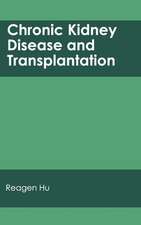Perioperative Management of Pacemaker Patients
Editat de J. L. Atlee III, H. Gombotz, K. H. Tscheliessniggen Limba Engleză Paperback – 18 aug 1992
Preț: 708.94 lei
Preț vechi: 746.26 lei
-5% Nou
Puncte Express: 1063
Preț estimativ în valută:
135.70€ • 147.45$ • 114.06£
135.70€ • 147.45$ • 114.06£
Carte tipărită la comandă
Livrare economică 21 aprilie-05 mai
Preluare comenzi: 021 569.72.76
Specificații
ISBN-13: 9783540538745
ISBN-10: 3540538747
Pagini: 172
Ilustrații: XII, 156 p. 9 illus.
Dimensiuni: 155 x 235 x 9 mm
Greutate: 0.25 kg
Ediția:Softcover reprint of the original 1st ed. 1992
Editura: Springer Berlin, Heidelberg
Colecția Springer
Locul publicării:Berlin, Heidelberg, Germany
ISBN-10: 3540538747
Pagini: 172
Ilustrații: XII, 156 p. 9 illus.
Dimensiuni: 155 x 235 x 9 mm
Greutate: 0.25 kg
Ediția:Softcover reprint of the original 1st ed. 1992
Editura: Springer Berlin, Heidelberg
Colecția Springer
Locul publicării:Berlin, Heidelberg, Germany
Public țintă
ResearchDescriere
A symposium, "Perioperative Management of Pacemaker Patients", was held in May 1990 at the Karl-Franzens-Universitat, Landeskrankenhaus Graz, Austria. The purpose of the symposium, organized by the Departments of Anesthesiology and Surgery, was to discuss the current status of permanent pacemaker technology, emerging developments in this field, legal issues, indications and methods for tempor ary perioperative pacing, and the potential for pacemaker malfunction and adverse patient-pacemaker interactions in perioperative and other medical settings. It was hoped that participants would come to some consensus concerning recommendations for satisfactory perioperative management of pacemaker patients. This symposium was probably the fIrst occasion ever that brought together representatives of the pacemaker industry, implanting physicians, and physicians responsible for the management of pacemaker patients in perioperative and other hospital settings to discuss these important matters. Certainly, it was recognized by all who attended that there existed at the time little in the way of substantial knowledge of how to best manage pacemaker patients or patients with possible indications for temporary pacing in "unique" hospital settings especially with exposure to electroma gnetic and other potential interference, but in the absence of professional persons with direct knowledge of pacemakers and related devices. Much new information was presented and useful ideas exchanged, so that three symposium participants were of the opinion that papers presented at this meeting should be published as a collective work.
Cuprins
Current Status of Pacemaker Technology.- Saftey Standards for Cardiac Pacemakers.- Prevention of Crosstalk in Dual Chamber Pacemakers.- Modern Pacemakers.- Rate-Responsive Cardiac Pacing.- Pacemakers in Children.- Implantable Cardioverter-Defibrillator.- Electromagnetic Interference and Cardiac Pacemakers.- Radiofrequency Transmission and Cardiac Pacemakers.- Nuclear Magnetic Resonance Imaging in Pacemaker Patients.- Radiation Therapy in Cardiac Pacemaker Patients.- Extracorporal Shock Wave Lithotripsy in Pacemaker Patients.- Pacemaker Malfunction: The European Legal Perspective (with Particular Emphasis on Austrian Law).- Indications for Pacing: The Cardiologist’s Perspective.- Place of Pacing in Cardiopulmonary Resuscitation.- Holter Monitoring for Preoperative Assessment of Bradycardic Arrhythmias.- Temporary Perioperative Pacing.- Pacemaker Malfunction in Perioperative Settings.- Guidelines for the Perioperative Management of Pacemaker and Automatic Internal Cardioverter-Defibrillator Patients.













